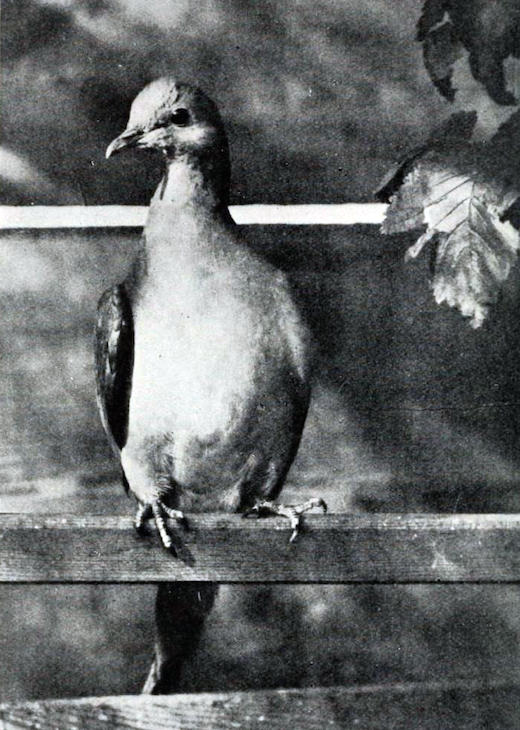Passenger Pigeon

Extinct 1914
The Passenger pigeon was adapted for speed and maneuverability in flight. They had a small head and neck, with a long, wedge-shaped tail. Their wings were long, broad, and pointed. The Passenger pigeon had large breast muscles in order to fly for very long distances. The iris was a carmine-red color which was surrounded by a narrow purplish-red eye ring. The Passenger pigeons had black bills with feet and legs that were a bright coral red in the male and duller in the females and young. The adult male pigeon had a blue-ish gray head, nape, and hindneck. The upper mantle was displayed with feathers that had a bright violet to golden-green iridescence. The upper back and wings of the Passenger pigeon were a pale gray that turned into grayish-brown on the lower wings. On the wings was sever small black spots. The tail had a white outer edge and also had black spots like on the wings. The lower part of the belly was a pale pink while the upper part, including the lower throat and breast, was a rich pinkish-rufous color. The Passenger pigeons had an unpleasant voice that gave off a harsh "keck" noise. The "keck" was given twice in succession with a pause in between them. This was thought to attract other pigeons. They had a second call that was used to either call its' mate or towards creatures they considered enemies.
Habitat
The Passenger pigeon was found across most of North America that lied east of the Rocky Mountains. The pigeon originally bred from southern parts of eastern and central Canada and south to eastern Kansas, Oklahoma, Mississippi, and Georgia as well. Their breeding range was primarily in southern Ontario and the Great Lakes states. However, it did continue south through states that lied north of the Appalachian Mountains. During severe winters, they were also spotted in Bermuda, Cuba, and Mexico. They preferred living in eastern deciduous forests in beeches and oak trees. They usually wintered in large swamps that had alder trees, but would inhabit forested areas with pine trees if a swamp was not available.
Extinction
There are two major causes for the extinction of the Passenger pigeon: commercial exploitation of pigeon meat and loss of habitat. The Passenger pigeons flew in large flocks and practiced communal breeding which made them easy hunting targets. Deforestation also played a huge role in their extinction since they had no where to call home. The Passenger pigeons were almost completely gone by the mid 1890's. The pigeons were used to breeding in large flocks which made it difficult for the few pigeons alive to re-populate the species. The last known wild pigeon was near Sargents Pike County, Ohio. He was last seen on March 22 or 24, 1990 when he was killed by a BB gun by a boy named Press Clay Southworth.